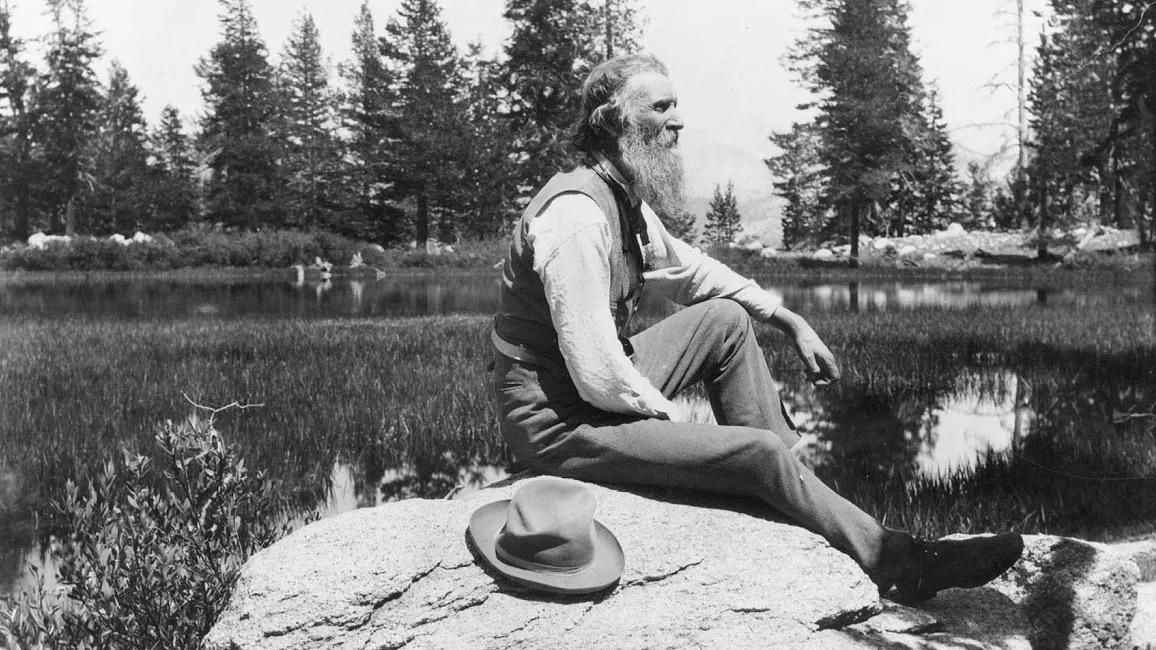John Muir (1838-1914) was America’s most famous and influential naturalist and conservationist. He is one of California’s most important historical personalities. He has been called “The Father of our National Parks,” “Wilderness Prophet,” and “Citizen of the Universe.” He once described himself more humorously, and perhaps most accurately, as, a “poetico-trampo-geologist-botanist and ornithologist-naturalist etc. etc. !!!!”
More recently, famed documentary film maker Ken Burns said, “As we got to know him… he [John Muir] ascended to the pantheon of the highest individuals in our country; I’m talking about the level of Abraham Lincoln, and Martin Luther King, and Thomas Jefferson, and Elizabeth Cady Stanton, Jackie Robinson – people who have had a transformational effect on who we are.” John Muir remains today an inspiration for environmental activists everywhere.
As a wilderness explorer, he is renowned for his exciting adventures in California’s Sierra Nevada, among Alaska’s glaciers, and world wide travels in search of nature’s beauty. As a writer, he taught the people of his time and ours the importance of experiencing and protecting our natural heritage. His writings contributed greatly to the creation of Yosemite, Sequoia, Mount Rainier, Petrified Forest, and Grand Canyon National Parks.

His words and deeds helped inspire President Theodore Roosevelt’s innovative conservation programs, including establishing the first National Monuments by Presidential Proclamation, and Yosemite National Park by congressional action. In 1892, John Muir and other supporters formed the Sierra Club “to make the mountains glad.” John Muir was the Club’s first president, an office he held until his death in 1914. Muir’s Sierra Club has gone on to help establish a series of new National Parks and a National Wilderness Preservation System.
Perhaps his greatest legacy is not even wilderness preservation or national parks as such, but his teaching us the essential characteristic of the science of ecology, the interrelatedness of all living things. He summed it up nicely: “When we try to pick out anything by itself, we find it hitched to everything else in the Universe.”

Perhaps the best known way of connecting John Muir with the present is through the continuing activity of the Sierra Club. The Sierra Club still conducts outings to wild places, just as it did in Muir’s time, and continues to work to protect our wild places and natural heritage. Furthermore, John Muir would be proud that his Sierra Club has evolved to address the other pressing environmental issues of our time, including the global threat of climate change and loss of biodiversity, and also to work in favor for racial and environmental justice. The Club embraces Muir’s most essential wisdom as exemplified by his own life, to “explore, enjoy and protect the planet.”
John Muir’s life reminds us of the important things that just one person can do. But Muir had the foresight to realize that it could not always be just what “one person can do.” Collective action is necessary, which is why John Muir agreed, in 1892, to be the first President of the Sierra Club, and served in that capacity for the rest of his life. John Muir can be readily seen as the founding inspiration for the environmental movement, which continues to address the need for ecological harmony.
John Muir is as relevant today as he was over 100 years ago when he met with President Theodore Roosevelt in Yosemite. Many of today’s headlines have Muir to thank for their inspiration.
Muir’s work as a scientist and advocate for nature has continued relevance in modern environmental campaigning. An openness to different points of view and a capacity to change one’s mind when presented with new information are character traits to be welcomed, while a focus on protecting nature for the health of the planet and all its inhabitants is more relevant now than ever.
